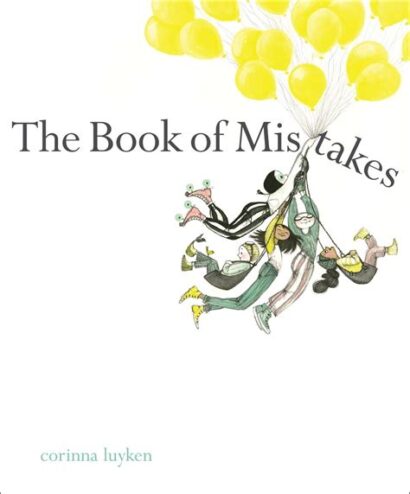SEL Read Aloud: The Book of Mistakes by Corinna Luyken

Summary
In “The Book of Mistakes” by Corinna Luyken, a girl draws a picture — first of a girl, then of her immediate surroundings, and eventually of her entire world. She reflects on every step along her artistic journey. These include the things that go according to her plan, her mistakes, and even her attempts to correct for those mistakes that always obscure her errors and sometimes even produce “good ideas.” You struggle to see her initial mistakes as her drawing progresses. By the end, you wonder whether any of them were truly mistakes if they served a purpose larger than drawing something perfectly in line with her own expectations.
Comprehension Questions
Six questions aligned to Bloom’s taxonomy for teacher’s to evaluate students’ comprehension
- Remembering: What was the first mistake mentioned in the story?
- Understanding: Describe how the illustrator turned mistakes into creative ideas.
- Applying: Demonstrate another way to turn an ink smudge into an intentional part of a drawing.
- Analyzing: Compare the feelings before and after the mistakes were transformed into positive attributes.
- Evaluating: Judge whether the “mistakes” actually enhanced the final artwork. Provide reasons for your opinion.
- Creating: Invent an alternative ending where another “mistake” appears and propose how the character or illustrator might resolve it creatively.
CASEL Discussion Questions
Five questions aligned to the CASEL competencies for teachers to foster an engaging discussion and foster social-emotional learning
- Self-Awareness: Can you recall a time when you turned a mistake into an opportunity for learning or creativity? How did that experience change your perception of yourself?
- Self-Management: Discuss the importance of patience and persistence in turning mistakes into successes. Provide an example from your life or someone you know.
- Social Awareness: Discuss the impact of peer reactions to mistakes. How can positive reinforcement from friends or classmates encourage creativity and risk-taking?
- Relationship Skills: Discuss how asking for help when you’ve made a mistake can strengthen your connections with others.
- Responsible Decision Making: Discuss the decision-making process behind whether to correct a mistake or incorporate it into your work. How do you decide which path to take?
Design Thinking Challenge
Take students’ learning even further by incorporating the Imagineerz design thinking framework
Create a mistake masterpiece
Understand
- Start by discussing “The Book of Mistakes” by Corinna Luyken, focusing on how each mistake in the book evolves into a unique and unexpected artistic creation. Explore the concept of mistakes as opportunities for creativity and innovation rather than failures.
- Engage students in reflecting on their personal experiences with mistakes that led to creative outcomes or new ideas.
Ideate
- Challenge students to brainstorm ideas for mistake masterpieces, art projects or inventions that begin with an intentional or accidental mistake. Examples might include turning a paint spill into a part of a painting or transforming a torn piece of paper into an element of a collage.
- Encourage them to think about various artistic mediums and materials they could use to turn different kinds of “mistakes” into art.
Prototype
- In groups or individually, students will choose one of their mistake masterpieces ideas to develop further. They should start by creating a small-scale model or sketch to plan their project, considering the materials they will need and how they will incorporate their initial “mistake” into the final piece.
- Provide a variety of art supplies for prototyping, including items that can mimic potential mistakes (e.g., smudged ink, uneven cuts, etc.).
Test
- Organize a gallery walk where each student or group presents their mistake masterpiece. They should explain the original “mistake” and show how it was transformed into an integral part of their artwork.
- Ask viewers to provide feedback on the creativity of the transformation, the integration of the mistake into the final piece, and any suggestions they might have for exploring other mistakes.
- Conclude with a reflection on the process of turning mistakes into art. Discuss what students learned about the creative process, how their perspective on mistakes changed, and how this project might influence their approach to future challenges and “mistakes” they encounter.
Read Aloud
If you appreciated getting to read this book with your class, you might also want to share this book with them!
Additional Resources
Copyright Notice
The image on this page comes from the book The Book of Mistakesby Corinna Luyken. Copyright © 2017 by Corinna Luyken.


